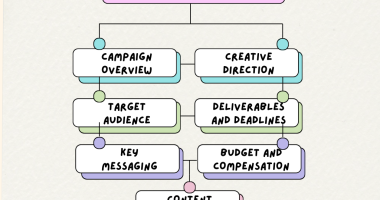
Opinions expressed by Entrepreneur contributors are their own.
In the world of marketing, the ability to influence perceptions is paramount to driving growth and revenue. One of the most sure-fire and overlooked ways of breaking into the minds of others is by consistently featuring you and your brand on TV news.
In particular, regional TV media coverage can certainly amplify your local marketing efforts, and it’s also a great way to position yourself as a thought leader or authority in your field. Should your story be genuinely impactful and relevant to the mainstream, there’s also the chance to be picked up for broader coverage on more national platforms.
As a PR professional who works to secure media placements for his clients, I have seen firsthand how consistent local TV features can affect a brand’s image and bottom line. From attracting higher quality clients to being invited to speak on bigger stages, I assure you that making the camera your best friend is in your best interest.
In this article, let’s go over six key ways you can strategize and earn the TV spotlight you deserve.
Related: Why Local Media is the Secret to Getting Free PR
1. Crafting newsworthy content with a local hook
The golden rule for getting on TV is being newsworthy. To pass this litmus test, tailor your story to the heartbeat of the community. Local news thrives on what affects the day-to-day lives of its viewers. When drafting a press release, infuse it with regional statistics, stories or tie-ins to current events. For instance, if you’re launching a new product, anchor your narrative on how it solves a problem for locals or creates jobs in the area. Always ask, “Why would the local community care?” This relevance is what transforms a commercial message into a news story.
To master this, keep abreast of local issues, community leaders and recurring segments on the news channels. If there’s a weekly business spotlight, craft your pitch to align perfectly with that segment’s theme, demonstrating an understanding of its format and audience.
2. Building and leveraging media relationships
In the dance of news-making, relationships are your rhythm. Connecting with journalists, producers and anchors outside pitching builds rapport and trust. I always advocate for a strategy that mixes professionalism with personal touch. Engage with them on social media, comment on their stories with genuine insight and meet them where they are.
If you’re a bigger company, hosting exclusive media roundtables or offering first dibs on breaking news to your contacts can set you apart. Otherwise, maintaining a roster of industry experts can make you the first port of call when news breaks relevant to your niche.
3. Maximizing visual storytelling for television
Television is a visual medium, and the phrase “show, don’t tell” is a commandment to live by. Visuals are the quickest way to communicate your story’s appeal. When pitching, think like a producer and ask yourself what visuals you can offer. Can you demonstrate your new product, offer a behind-the-scenes look at your process or provide footage of community impact?
As an example, say you’re a local restaurant launching a community kitchen program; don’t just send a press release. Also, include high-quality images of the meals and the team in action alongside an invitation to visit and film the program live. Ensure you can provide these opportunities with ease, with no additional legwork required from the station.
4. Engaging with the community and aligning with local events
Community engagement isn’t just good civic practice; it’s effective PR. Get involved with what matters to people and you’ll often find the cameras follow. Whether it’s a charity event, a city hall meeting about a pressing issue or a local festival, these are your stages.
You can capitalize on this by pairing your business with nonprofits for events that benefit the community and provide excellent local stories. We’ve found that the positive news of corporate social responsibility is often a magnet for positive media coverage.
5. Strategic follow-up and media preparedness
The follow-up is where good PR strategists excel and where great ones dominate. Don’t let your pitch vanish into the ether after hitting “send.” A follow-up call or email can propel your story from the newsroom inbox to the assignment desk. It’s about balancing persistence and patience — being proactive without being a pest.
Being media-ready is also critical. Ensure your spokespeople are well-trained to handle questions succinctly and with poise. Having a media kit on standby — with bios, factsheets and potential Q&A — demonstrates professionalism and respect for the news outlet’s time.
Related: What Not to Hook a Media Pitch to, Ever
6. Adaptation to changing news trends and formats
Staying adaptable to the changing tides of news media is the sixth and crucial key. News formats are evolving, with increasing integration of social media and interactive content. Understand these trends and leverage them in your pitches. Propose stories that could extend into online platforms or suggest segments that invite viewer participation through social media.
Additionally, as newsrooms face staff reductions and increased demands, choose to become a solution provider for them. Offer content that fits into shorter, more dynamic news segments, which are becoming popular due to changing audience behaviors and the adaptation to digital platforms.
In conclusion, integrating these six key strategies into your PR playbook can significantly increase your odds of TV news coverage. Remember, TV is the sum of many parts: content, characters, visuals and timeliness. Whether you’re rallying for a cause, pushing for brand recognition or asserting thought leadership, television news can catapult your narrative to the forefront where it belongs. These six keys not only help you pitch a better story, but you’ll also create a newsworthy package ready for broadcast and recognition.
From my desk to yours, happy pitching and see you on the screen!
This article is from Entrepreneur.com









